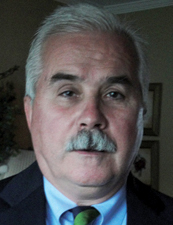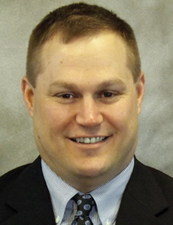2014 Power Broker
Workers’ Comp
Winning Big
The longtime workers’ compensation insurer for a large client announced early last year that it planned to increase rates on all renewing accounts. Following up immediately with the insurer, Thomas Edridge learned his client faced a 10 percent to 15 percent rate hike at its Oct. 1, 2013, renewal, even though no claim had exceeded the client’s deductible for 10 years, the client’s risk manager noted.
In response, Edridge sought the insurer’s commitment by April to renew the account at expiring rates, with a two-year rate lock, or lose the profitable business. Edridge began marketing the account, but the incumbent relented by the deadline. The risk manager estimated that the first year’s savings alone could total nearly $84,000.
Meanwhile, the client’s umbrella liability insurer had said that it would be excluding coverage for occupational disease claims filed in the client’s home state. The decision followed a court ruling that those claims fell outside of the workers’ comp sole-remedy defense. Edridge, however, persuaded the insurer to hold off imposing the exclusion, because state lawmakers were crafting legislation designed to reverse the ruling’s effect.
Edridge’s effort with the excess insurer prevented a “catastrophic” exposure for the client, the risk manager said. “Without Tom’s efforts we would have been uninsured for tort-based employer liability claims arising from occupational disease.”
For another client, Edridge demonstrated that the company’s longtime relationship with a workers’ comp insurer left much to be desired, so he found them a better one.
Meaningful Support
Many employers need help controlling workers’ compensation program costs, and Mike Gingrich provides them meaningful support.
An employee staffing company was facing dozens of open claims that were driving up losses and driving away insurers. Gingrich first placed the new client with an insurer willing to write guaranteed-cost coverage but with a high deductible.
Then Gingrich began aiding the client in managing its claims. Under his direction, the client revamped its claims-handling process. Unlike with the previous insurer and claims processor, no new claimants went unattended for days, weeks or even months. All were contacted within 24 hours of sustaining their injuries. Gringrich also ensured that employees’ jobs were classified accurately, and Neace Lukens is auditing claims monthly — with regular input from the underwriter.
Within the first year, the client closed all but four of the 36 open claims it had when it retained Gingrich. The total incurred cost for those claims dropped by 20 percent, according to the client’s chief financial officer. Moreover, the company projects $250,000 of annual savings under its new approach, the CFO noted.
Gingrich and Neace Lukens also weighed in on an old audit, pointing out some state-specific per diem exceptions that resulted in more than $25,000 of savings for the client, the CFO said.
Gingrich is similarly aiding a research and engineering company that has seen its workers’ comp premiums soar in an Eastern state as the company’s claims management significantly deteriorated.
Owning the Numbers
Matt Mautz provides valuable assistance, even to those clients that don’t appear in need of a great deal of help.
Beall’s Inc. already had been reducing its workers’ compensation costs. But “we needed to take it to another level to provide deeper analytical insight to our claims to include predictive modeling and trending analysis,” said Vincent P. Foderingham, the company’s divisional vice president-risk manager at the time.
Mautz and his team outperformed the goals Beall’s set for 2012 and 2013. While maintaining continuity — and flat rates — with the incumbent insurer, they engaged the client’s claims team to identify and target long-term, high-exposure claims for settlement, Foderingham said. “Our average incurred has been reduced by 34 percent, costs for our average indemnity claims are down 41 percent, our indemnity claim closing percentage is up by 42 percent, and our average incurred indemnity claim per $100 of payroll is reduced by 48 percent.”
For Osage Casinos, whose workers’ comp claim frequency and severity had fallen in recent years, Mautz provided analysis that showed the client’s planned risk-financing change was not as prudent as it seemed, noted Ebb Moton, safety and risk manager. Osage had been contemplating self-insuring its workers’ comp risk, Moton explained. While Mautz was receptive to the idea, he also had some trepidation and asked for the opportunity to conduct some research. Mautz managed the pace of the decision and provided crucial analytics.
The Loss Stopper
Robert Phelan specializes in digging out the roots of clients’ workers’ compensation costs and preventing them from taking hold again.
Facing a growing number of claims resulting from patient handling, a large nursing home chain decided to hire a safety director to oversee what management believed would be a new, difficult-to-implement safety program.
Phelan recommended that management instead retain a specialty consultant that promised to reduce the costs associated with patient-lifting injuries by 80 percent, the company controller said. In April 2013, the company launched a pilot program at its facilities with the worst experience, and the results already are “astonishing,” according to the controller. Two facilities eliminated nearly all of their patient-lifting claims. Overall within eight months, incurred losses fell 65 percent and total claims dropped 44 percent. The company is on track to cut its patient-lifting injury costs at least 80 percent by April.
“The incurred loss reduction improves our financial results in our captive, and we also have higher productivity, less administrative work and a reduction in hiring replacement workers,” the controller noted.
History suggests that the nursing home chain should expect to sustain its recent loss experience.
Since Phelan and his injury management team began working with an auto dealership about eight years ago, the client has kept its loss ratio below 50 percent for all but one year.
Keeping Costs Down
Joe Picone’s clients say the broker is a master at showing them how they can slash workers’ compensation costs even as insurers are raising rates.
The foundation of the process is deriving frank input from clients’ employees. Employees are given the opportunity to speak freely without fear their observations will bruise management’s ego.
In January 2013, Picone and his staff implemented the process for a shipping client. “The outcomes of this program have been significant,” noted the client’s workers’ comp manager. For example, the process showed that the company can save $1 million by modifying its litigation management fee structure in key states. In its medical management area, the company is eyeing projected cost savings “in the seven-figure range” by unbundling, modifying its specialist network and encouraging greater employee use of medical caregivers in the client’s preferred provider network.
The process also spurred the client to conduct a request for proposal for a third-party administrator, which could result in millions of dollars of savings, the workers’ comp manager said.
A food service company that was unhappy with its workers’ comp program also expects to reap huge rewards after implementing the process.
Picone and his team undertook an extensive survey of key stakeholders in its workers’ compensation process and produced 200 takeaways, the company’s general counsel said.
Investing in Industry Improvement
It is often said that the insurance industry is its own worst enemy when it comes to public relations.
Joe Picone is one insurance professional who understands the importance of providing the media with the information it needs to sketch a balanced, useful portrait of the industry.
Picone frequently serves as an information source to this publication and many others, which plays into his desire to improve the industry as a whole. At Willis, he helped to design a robust “Strategic Risk Planning” process that personalizes the workers’ comp claims process for each client. It breaks away from the broker’s “playbook,” but is “yielding millions in savings for our clients,” Picone said.
He is also keenly conscious of the importance of preparing the next wave of talent that is going to impact the industry. Picone personally vets and interviews every candidate the company hires into the claims practice, as well as works on career development programs for new hires. The programs ensure that the skills baby boomers take with them when they retire are passed along to the incoming class, strengthening the practice as a whole. His involvement also shows new candidates “how serious we are about hiring and training the right people not just for Willis, but for our industry,” Picone said. He also recently spoke at a Workers’ Compensation Institute conference on the importance of hiring the right people into a claims organization.
A Sleuth of Risk
Robert Terracciano investigates every possibility. The result is a solution for clients facing big workers’ compensation insurance problems.
For one manufacturing client with six plants nationwide, Terracciano uncovered numerous cost-saving measures. Some could be applied companywide, others varied by plant, and yet others depended on whether the plant was located in a monopolistic state, said an attorney who worked with Terracciano.
For example, in a few cases, Terracciano recommended that the employer outsource some non-skilled jobs so the workers’ comp insurer could exclude individuals filling those positions as the client’s employees. Terracciano also sorted through job codes, finding errors that had resulted in higher insurance costs.
Those measures, which the client’s previous broker of nearly a decade had never suggested, resulted in a nearly 10 percent savings for the company.
For another client whose longtime insurer dropped it and many other New York State employers over aggregation-of-risk concerns, Terracciano and the client’s risk manager decided to beat the competition to new capacity.
The challenge was significant. The client and five competitors with a total head count approaching 100,000 would have to find new underwriters around the same renewal date. Those who failed would land in the state fund, where costs are greater and service poorer.
Terracciano found another market and nailed a cancel-and-rewrite plan ahead of schedule.
















